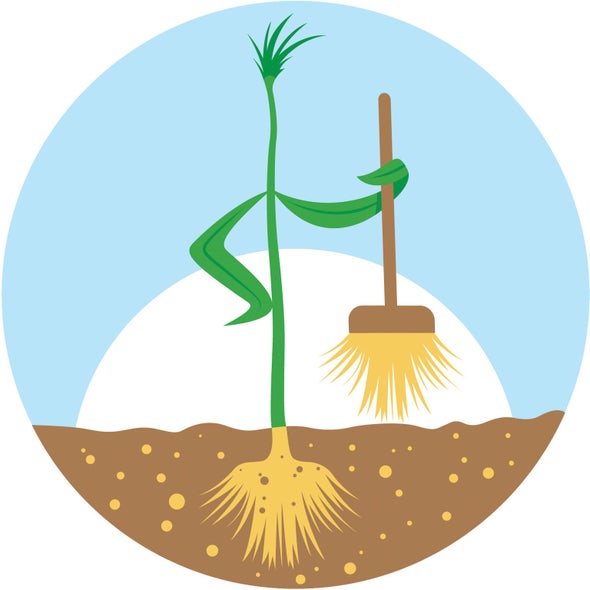Chemicals from munitions have permeated soil across an estimated 10 million hectares of land used for firing ranges across the U.S. One such chemical, an explosive called RDX, can leach into groundwater and cause seizures and possibly cancer. Now a study in Nature Biotechnology shows that genetically modified switchgrass—a plant common in North American prairies—can absorb and break down RDX.
University of York biologists Neil Bruce and Liz Rylott and their colleagues altered a switchgrass variety to carry two genes from a bacterium that produces enzymes capable of reducing RDX into harmless components. After conducting lab tests, the researchers planted the modified switchgrass on New York State's RDX-polluted Fort Drum military base.
For three years the team tested soil and water pumped from plastic-lined plots where modified plants, wild plants or no plants grew, painstakingly removing seeds from the modified switchgrasses to prevent cross-pollination with local varieties. They found that the modified plants took up RDX, lowering levels significantly in the surrounding water, and broke it down—RDX did not appear in the modified plants' tissues, but it did in wild plants.
“The evidence is compelling that the transgenic [switchgrass] works very well and grows without the RDX being toxic to the plant,” says University of Iowa environmental engineer Jerald Schnoor, who was not involved in the study.
Removing this pollutant has proved especially challenging, partly because unexploded ordnance peppers many of the country's massive firing ranges. Bacteria that break down RDX exist in soil but do not consume the toxin fast enough to keep it from seeping into aquifers.
“Nature has the ability to clean [RDX] up; sometimes it needs a bit of help,” Rylott says. “It's a Batman and Robin combo—bacterial Batman, and the plant is Robin.” Other researchers have used plants to clean up PCBs, DDT, nickel and arsenic.*
The researchers also genetically modified another plant, western wheatgrass, to take up RDX. “If we transform a couple more species,” Rylott says, “we can get a toolbox that will be able to take out RDX, but we can also maintain biodiversity across the training range.”
*Editor’s Note (8/10/21): This sentence was edited after posting to correct the reference to PCBs.

